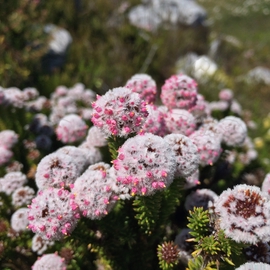Jasper Slingsby
Jasper Slingsby Research Associate Envelope Twitter Github Google Jasper was formerly SAEON staff, but moved to the Department of Biological Sciences at the University of

Recent advances in the availability of regularly updated, high resolution remotely-sensed data, combined with advances in computation have made it possible to monitor ecosystems at higher spatial and temporal resolution than previously possible. Much of the focus in research and the development of tools to make use of this new data has been in the forested ecosystems of the northern hemisphere and the tropics. More than 90% of South Africa’s terrestrial surface is covered by “open” non-forest ecosystems such as shrublands, woodlands and grasslands. Detecting abnormal change in these ecosystems is highly challenging, because the state of the vegetation varies dramatically due to natural disturbances, long-term trends or cyclical functions, such as those relating to fire, postfire recovery, and seasonality. Overcoming these challenges is critical, because open ecosystems dominate much of the globe, making up >40% of the global total ecosystem organic carbon and harbour a substantial proportion of the world’s biological diversity.
With the National Research Foundation funded RReTool project, we are developing tools to make full use of the potential of satellite data for monitoring the non-forests ecosystems that dominate South Africa, and to deepen our understanding of how they vary in space and time. Using this information we are improving our ability to manage and mitigate the impacts of threats such as invasive alien plants, land cover transformation and climatic change. All of this is being achieved using only freely available open source software, and publically available data, and reproducible research principles. The information and tools generated will therefore be available at no expense to researchers and managers to use and modify as needed, allowing outputs to be regularly updated and/or improved. This will ensure that environmental resource management is informed by up-to-date accurate data.

Jasper Slingsby Research Associate Envelope Twitter Github Google Jasper was formerly SAEON staff, but moved to the Department of Biological Sciences at the University of